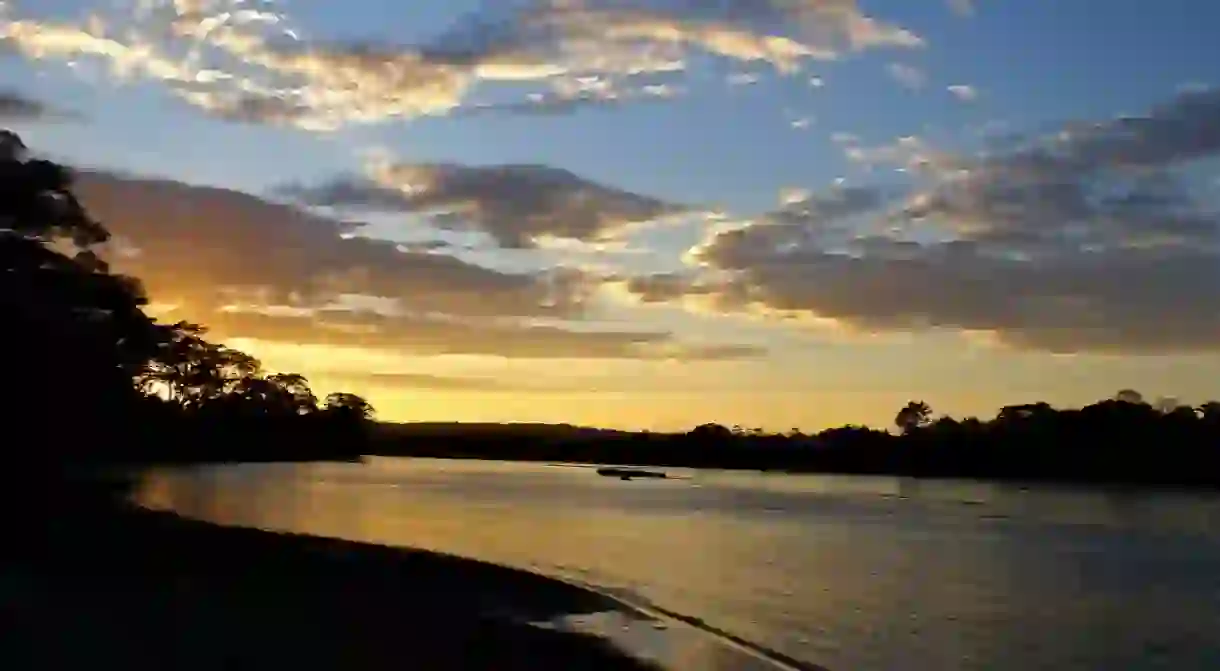These Are the Longest Rivers in Mexico

Rivers have an important place in our collective memory and in our national and global ecosystems. Mexico, which many imagine as a dry, dusty desert is actually blessed with many important rivers throughout its territory. Many are threatened by the human activity that goes on around them, but they remain symbols of the past and future of the country.
Rio Bravo
A monster river that winds more than 3,000 kilometers along the US – Mexico border, the Rio Bravo (Called the Rio Grande by English speakers), is one of North America’s most important river systems and notorious around the world for its role in illegal immigration. Every year immigrants traversing the river to get to the United States die in the crossing, but the river’s bad rep is not the only thing it’s known for – it also supports the flora and fauna in an area of 400,000 square km.

Rio Colorado
The Rio Colorado begins all the way up in the Rockie Mountains of the United States. This beautiful river then winds its way 2,334 kilometers down through the southwestern United States and into Mexican states Baja California and Sonora. The United States and Mexico governments work together to manage and conserve this river that in the past several years, due to overuse by both countries, has experienced a reduction in flow and reach.
Rio Usumacinta
If you could follow the Usumacinta from its mouth in the Gulf of Mexico through Guatemala, you could go all the way to the Pacific ocean. This 1,000 kilometer river makes up part of the Guatemala-Mexico border but also forms a type of border between the Yucatán peninsula and the rest of mainland Mexico. Along the river’s route are some incredible canyons including the Boca del Cerro in the state of Tabasco.

Rio Culiacán
The Rio Culiacán begins near the city of the same name in the Mexican state of Sinoloa. The river is well known for its high levels of contimination believed to be the result of illeal gray water dumping by rural communities upriver and within the city limits as well. This river dumps into the Gulf of California, an important habitat for marine life and mating grounds of the California Grey Whales.
Rio Balsas
Balsas is one of the country’s longest rivers and takes its course through the southern states of Guerrero and Michoacan to end in the Pacific Ocean. Rio Balsas is formed by three main rivers, the Atoyac, the Mixteco and the Tlapaneco. In the 19th century, before several highways and bridges had been built connecting this part of the country to the interior, several companies investigated navigating the river as a way of moving goods and people throughout the region. It ended up being too dangerous a route for many reasons including rocky areas in some parts of the riverbed.

Rio Lerma
Mexico’s Rio Lerma is the longest interior river in the country and one of its most important, beginning in the State of Mexico and emptying into Lake Chapala in the state of Jalisco. This river has been a necessary water and irrigation resource from long before the arrival of the Spanish and many farmers and cities (including Mexico’s capital) depend on it. Unfortunately, it is extremely polluted due to agricultural run-off and grey water dumping all along its route. Scientists say that biologically the river is dead with no oxygen along its first 15 kilometers that run through the State of Mexico.
Rio Grijalva
The Grijalva river passes through the state of Chiapas and into the state of Tabasco where it figures prominently into the urban landscape of Villahermosa, the state’s capital city. Along the way, the river is used to create hydroelectric power and as a source of water and irrigation for many of the communities along its route. Like most of the rivers on this list, the Grijalva has its own problems with pollution and loss of biodiversity due to human impact.

Rio Conchos
The Rio Conchos 560 kilometers pass through fourteen municipalities in the desert state of Chihuahua in the north of Mexico. This river, that at its end dumps into the mighty Rio Bravo, is one of the state’s only natural sources of water and provides desperately needed irrigation to the area. It is also an important river in the 6-canyon system that makes up the tourist destination Copper Canyon.
Rio Nazas
The Nazas River got its name from the Spanish, who when they navigated this river for the first time saw indigenous communities along the banks fishing with a particular kind of fishing net/basket called a nasa. The river is home to an amatuer kayaking contest every year and was one of the filming locations of the movie The Wild Bunch. Many of the rivers species are endangered due to over-fishing and river pollution from the cities and communities the river passes along its route.














